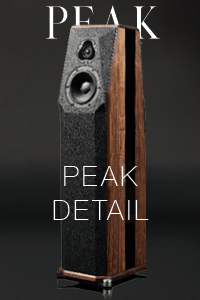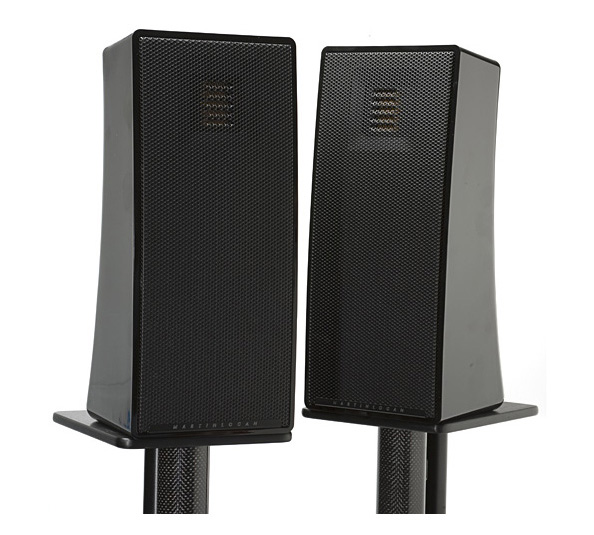 I must admit, I’m almost never impressed with what I hear at audio shows, and it’s not for the manufacturers’ lack of trying. It’s always tough to hear anything decently at a show, even if the room is set up fairly well. But at last year’s CEDIA convention, there was something that really blew me away, the final prototypes of MartinLogan’s new Motion series, especially when I saw how tiny they were.
I must admit, I’m almost never impressed with what I hear at audio shows, and it’s not for the manufacturers’ lack of trying. It’s always tough to hear anything decently at a show, even if the room is set up fairly well. But at last year’s CEDIA convention, there was something that really blew me away, the final prototypes of MartinLogan’s new Motion series, especially when I saw how tiny they were.
While MartinLogan is well known for their electrostat speakers, they have been making great strides with their ATF planar tweeters over the past few years, the Motion series uses the same air motion technology for their tweeter that was made famous by ESS in the 1970’s. The air motion driver has made a big comeback in the past ten years, showing up in flagship speakers from Dali and Burmester to name a few. Because of its folded ribbon nature, this tweeter has the speed of a panel speaker, offering the transparency that MartinLogan is famous for, but in a much smaller form factor.
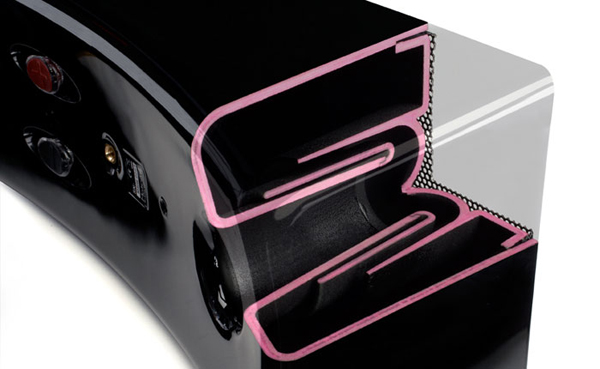
Only about 5 x 5 inches and just over a foot tall, MartinLogan managed to stuff a 4 inch woofer with a folded bass port into this tiny, curvy enclosure along with the new tweeter. The Motion 4 has a rated sensitivity of 90db/1watt, but it is very easy to drive. I used these speakers exclusively in my living room system to see how well they would work in a small environment.
Setup
I used the speakers about 9 feet apart (2 feet from the side walls, 18 inches from the rear wall) on a pair of carbon fiber Whitworth stands, with a tiny bit of blu-tack between the speakers’ base and that of the stands. The Motion 4’s also have a mounting flange for wall mounting, which should prove handy in a compact surround sound system. I also made use of one of their new Dynamo 700 wireless subwoofers that we will feature a detailed review on soon. Suffice to say for now, it’s another home run from MartinLogan, providing outstanding performance, value and perfect integration for the Motion 4’s. I would highly suggest one of these to round out a full range system based around the Motion speakers, whether it is two-channel or multi channel.
The Motion 4’s have some recessed binding posts that are easy to get at if you are stringing something similar to zip cord or the basic upgraded wire that a lot of home installers use. Those wanting to use somewhat higher quality cables need to be sure they are terminated with banana plugs. Spades of any kind will not work, due to the recessed nature of the binding posts. The Motion 4’s only weigh 6 pounds each, so I can’t imagine using mega speaker cables with these speakers anyway.
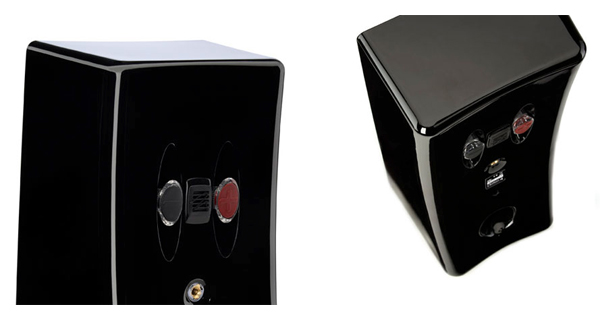
The Audioquest Colorado speaker I used for my listening sessions was probably a bit overkill for this application, but it worked great and did provide better sound that later switching to $1/foot Radio Shack speaker wire could offer. The bottom line is that these little speakers are capable of a healthy dose of resolution. The rest of the reference system was rounded out with a Naim Uniti (50w/ch solid state) all in one receiver, which allowed CD’s, FM, Internet radio and my iPod to be used as sources and the Prima Luna Prologue 1 vacuum tube integrated (30w/ch) along with a Denon 3910. For those that will be using the Motion 4’s as the start of a two channel system, rest assured that they are easy to drive with tubes or transistors, making this speaker even more versatile.
The Sound
In a small room with corner placement, the Motion 4’s have a surprising amount of bass on tap, much more than their LF range spec of 75hz would suggest. Adding the slight warmth of the Prima Luna to the mix made me wonder at first if a subwoofer was even necessary, and if you aren’t listening to Pink Floyd at bone crushing levels, you might not either. MartinLogan concentrated on making a great speaker that only goes down to 75hz cleanly rather than a mediocre speaker that goes down to 50hz, sacrificing everything else to get that last bit of ultimate bass. Remember, adding a subwoofer to a speaker with lousy midrange isn’t HiFi.
The key to appreciating and enjoying this speaker is how much quality it offers, and for those of you that have MartinLogan speakers in your main listening room and perhaps need a second system, or would like to build a small home theater system in another room, you will be pleasantly surprised at how much of the core ML sound is on tap here.
I went through a fair share of my classic rock favorites, Dire Straits, Pink Floyd, The Doobies, etc. to get a good feel for how these little speakers would perform on music that I know like the back of my hand. Friends and family members were all amazed at the natural sound the Motion 4’s possessed, and a couple of MartinLogan owners were equally impressed.
Again, the key to this speaker is the midrange performance and transparency, they offered. Cymbals sound incredibly right and these speakers do a great job with solo vocals as well. I never really felt like I was listening to a pair of “budget” speakers. Those listening to a steady diet of jazz and classical music will notice a slight bit of grain in the upper mids, but that’s being really fussy. Again, remember, these are entry-level speakers, not a pair of CLX’s.
At the end of the test, my $35 Pioneer receiver from the 70’s was substituted for the Naim, to see how these speakers would perform in an “extreme budget” system, and they passed the test quite handily. While they are capable of high resolution and will shine with better electronics, the Motion 4’s will offer a lot of sound with anything you hook them up to.
The speakers are very robust and even with a 35-watt amplifier at my disposal; I was amazed at how loud they would play in my small room. When I got wacky with Megadeth, Metallica and Korn, I could tell they needed more oomph, but that’s what that Dynamo subwoofer is all about. If you add one of those to the mix, even the most hardcore metal head should be very happy indeed.
A Breakthrough
When I heard the Motion 4’s in front of a pair of CLX’s (playing through some very nice gear from McIntosh) at CEDIA, I was really impressed. While many of the people in the room exclaimed, “are those the big speakers?” I knew they weren’t the CLX’s, because I own a pair, but they certainly didn’t sound like, are you ready…
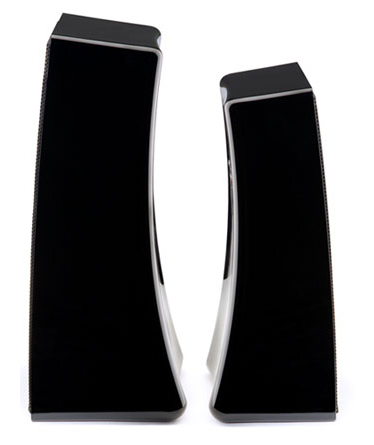
A $500 pair of speakers. That’s right. A pair of Motion 4’s will only set you back $500. Though my head is usually up in the clouds listening to five figure speaker systems, this is truly a breakthrough in budget speaker performance. No one on the staff guessed the price on the Motion 4’s; the closest bid was $800 a pair. Having just recently reviewed a number of small monitor speakers in the $1,500 – $3,000 a pair range, these speakers have got to be one of the best buys in high end audio today. Add that Dynamo 700, which is wireless ready, and you’ve got an amazing speaker system for under $1,200, and a great foundation to a system in the $2,000 – $3,000 range.
If we are going to get more people excited about the world of HiFi, this is definitely what we need a lot more of. I am very happy to award MartinLogan one of our Exceptional Value Awards for 2010. Don’t let the price fool you; the Motion 4’s are worthy of the MartinLogan name on the box.
-Jeff Dorgay
The MartinLogan Motion 4
MSRP: $499/pair
www.martinlogan.com
Peripherals
Amplification Naim Uniti, Prima Luna ProLogue 1
Digital Sources Denon 3910, Oppo BDP 83
Cable Audioquest Colorado
Power Shunyata Hydra 2, Shunyata Venom power cords









